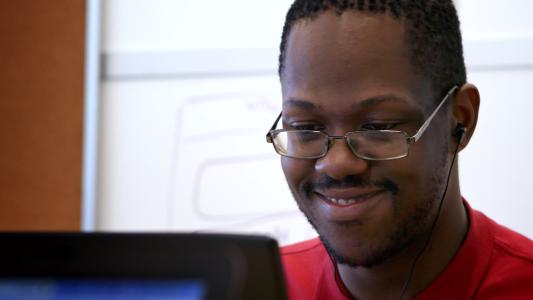We’re all familiar with the fake (but ultra-realistic looking) videos floating around social media that showcase politicians saying things they never actually said or famous actresses in porn videos that they never actually participated in. These videos, dubbed Deepfakes, have ignited fierce media criticism and call into question the public’s ability to discern fact from fiction.
The technology behind Deepfakes is called GANs, for generative adversarial networks. It’s a powerful type of neural network that was developed by Ian Goodfellow in 2014 for use in unsupervised machine learning. The setup uses two neural networks, algorithms that are loosely based on our brain’s wiring, and trains them on the same datasets of images, videos, or audio. The first neural network is called the generator network. It creates, or generates, fake pieces of content based on what it learned from the dataset. The other neural network, called the discriminator, acts as an “investigator” — it looks at the new creation and tries to determine whether it is like the images it has been trained on or a fake produced by the generator. Working together, these two networks can produce content that is eerily similar to the dataset on which it was trained.
While we’ve seen some malicious use of this technology, it has enormous potential to drive innovation beyond fake social media videos. Here are three ways GANs can be (and already is) used for good.
Creating Fake Medical Data Could Save Lives
AI can be a powerful tool to help doctors diagnose medical conditions more quickly and effectively. However, AI needs to see a huge amount of different examples of the condition it’s supposed to recognize, otherwise, results can be misleading. Mostly due to privacy concerns, medical researchers often find it difficult to accumulate the massive amount of data needed to make these applications as accurate as they can be.
In these instances, GANs can cheaply create the images needed to train the AI. Researchers from the chipmaker NVIDIA, as well as MGH & BWH Center for Clinical Data Science and the Mayo Clinic, turned to GANs to see if the technique could produce brain MRI images showing tumors. The new pictures were able to move the tumors to different areas of the brain, make them larger or smaller, or put them into an otherwise healthy brain.
“Some may not be realistic, but the AI system benefits from seeing it,” says Hoo-Chang Shin, a researcher at NVIDIA and coauthor of the paper. The researchers found that synthetic images were good enough to add to a collection of real images and get the same results as if the dataset only contained real images.
They aren’t the only ones hoping for a GAN booster shot for medical imaging: other researchers are experimenting with GANs for skin cancer, retinal diseases, and liver lesions.
“Our goal is not to convince people
climate change is real, it’s to get
people who do know it is real to do more
about that.”
The Effects of Climate Change Have Been Hard to Fathom — Until Now
GANs can also give us a glimpse into our future by illustrating climate change. Researchers from Montreal Institute for Learning Algorithms (MILA), Microsoft, and ConscientAI Labs used GANs to show what houses flooded from the effects of climate change would look like. It’s meant to help people take an abstract global crisis and make the impact more imaginable, even if they haven’t experienced any climate change-related weather event.
“Our goal is not to convince people climate change is real, it’s to get people who do know it is real to do more about that,” says Victor Schmidt, a researcher at MILA who worked on the paper.
In the future, the researchers plan to add “choice knobs” to the model. This would enable users to “visually see the impact of their personal choices, such as deciding to use more public transportation, as well as the impact of broader policy decisions, such as carbon tax and increasing renewable portfolio standards.”
Getting the tool out there is the next step. Schmidt says that the team has met with city officials from Montreal and NGOs who want to use it. A future goal is an app would allow people to upload photos of their homes and communities and see the results of the expected climate change, including other extreme weather events like fires, in their area. Beyond the tech, Schmidt says they will work with behavioral scientists to design the message with the most impact.
Diversifying the Fashion World
Most fashion models on mainstream shopping sites are all alike: thin, tall and white. Considering the majority of people worldwide don’t look like that, most shoppers are left to buy clothing with only the most general idea of how a piece might look on them. It might seem minor but representation matters — research shows how seeing plus-size models can improve self-esteem. Online fashion tech startup Vue.ai is changing that with GANs, creating models from the technology that can be all shapes, heights, and skin tones.
“Giving people the ability to visualize their body type, skin type, race is not a ‘nice to have,’ it’s basic table stakes in this day and age,” says Ashwini Asokan, the CEO of Vue.AI, who is herself a darker-skinned woman who isn’t runway sized. “With every new generation, it’s becoming clear you can’t build a brand without value systems, ethics, and diversity.”
If fashion executives need any more convincing, diversity is even good for business — a 2012 study found that consumers’ intent-to-buy goes up 200 percent when the model is representative of their size.




